

 The South African
The South African
The work was founded upon principles which have remained unaltered: that each of the dead should be commemorate individually by name on a headstone or memorial; that the headstones should be uniform and that there should be no distinction made on account of military or civil rank.
The cost of the work is shared by the partner governments - United Kingdom, Canada, Australia, New Zealand, South Africa, India and Pakistan - in the proportion of the number of their graves. Other Commonwealth countries contribute by bearing the cost of maintenance of graves and memorials in their own lands.
1 700 000 men and women of the Commonwealth forces died in the two World Wars. Over 900 000 are commemorated on headstones over their identified graves and the remainder, who have no known graves, are commemorated on memorials. There are war graves in more than 140 countries; mostly in the Commission’s 2500 constructed war cemeteries and plots, but there are also war graves in many civil cemeteries and churchyards throughout the world. To maintain this vast commitment the Commission has offices in a number of countries and a staff of 1400, mostly gardeners and building craftsmen.
Numerous volumes have been written about the two World Wars and the land, sea and air forces which took part in these great historic conflicts; this is the story of how those of the South African forces who lost their lives are commemorated.
Like their Commonwealth comrades, every South African serviceman who died in the two World Wars is commemorated individually by name, either on a headstone in one of the war cemeteries, which are to be found in all areas where fighting took place, or on one of the many Memorials to the Missing which were built to honour those who have no known grave.
It was at Delville Wood that South Africans played their first major role in the war in France when the South African Infantry Brigade took part in the attack at dawn on Friday 15 July 1916. It was also here that Private W. F. Faulds, who survived the war, won the first Victoria Cross to be awarded to a member of the South African Forces during the First World War. After weeks of very heavy fighting, during which hundreds of lives were lost, the wood was finally captured on 25 August 1916. Only one tree, a hornbeam, survived the bombardments and it still stands today in the new wood which has grown up around it.
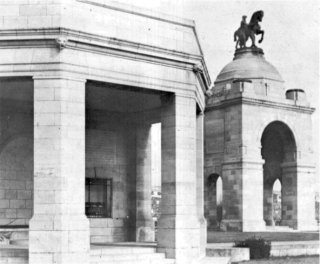
South African Memorial,
Delville Wood.
Of the 2 816 South Africans who died during the First World War and who have no known grave, no less than 858 have their names inscribed on the panels of the Thiepval Memorial to the Missing. This Memorial, on which are engraved a total of 72 073 names, is situated on a site of nearly 40 acres (16 ha) and rises starkly over the battlefields of the Somme. It was the scene of the most bitter and desperate fighting in which hundreds of thousands of men lost their lives.
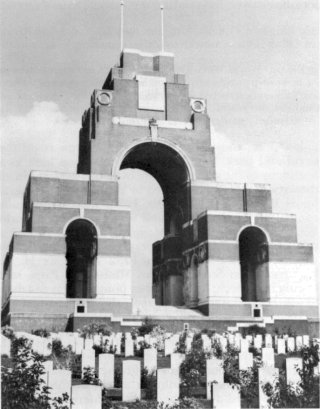
Thiepval Memorial,
France
Morogoro was captured on 26 August 1916 by the 1st and 2nd (South African) Mounted Brigades who, next day, continued the pursuit of the Germans into the Uluguru Mountains. There are 208 South Africans buried in Morogoro Cemetery, a number of whom were concentrated from small isolated burial grounds when maintenance in perpetuity could not be assured.
During the Second World War South African armed forces once again fought in many campaigns and from North Africa to Italy their progress can be measured from the headstones on which the springbok is engraved. Also in many parts of Europe are found the graves of men of the South African Air Force who died taking part in air raids over Germany and enemy occupied countries.
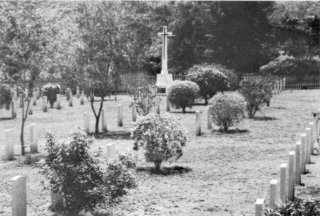
Morogoro Cemetery,
Tanzania
This Memorial commemorates the missing dead of the land forces, including 16 South Africans, from the operations in Italian Somaliland, Ethiopia and Madagascar.
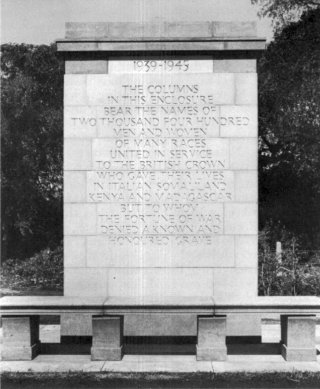
East Africa Memorial,
Nairobi
The South African Air Force played a major role in the East Africa Campaign, especially in reducing the effectiveness of the Italian Air Force thus reducing casualties to the ground troops to a minimum. The cemetery contains 352 burials, including 68 members of the South African Forces.
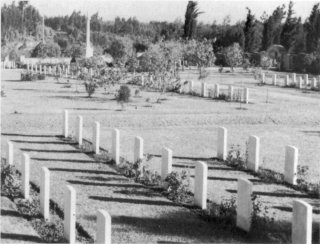
Addis Ababa War Cemetery,
Ethiopia
Of the 3 669 burials in this cemetery, 420 are South African, including 31 South African airmen. In the cemetery stands a Memorial which bears the inscription, in English and Afrikaans; ‘Sacred to the Memory of Our Gallant Comrades of the 1st South African Division who made the Supreme Sacrifice During the Battle for Cyrenaica November — December 1941’.
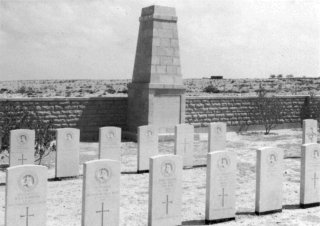
Knightsbridge War Cemetery,
Libya
The best known of the North African cemeteries of the Second World War is El Alamein which lies about 1 mile (1,6 km) from the sea in stark desert surroundings. This huge cemetery contains 7 367 graves, of which 495 are South African, and contains a large Memorial commemorating the missing dead of the Desert Army and Air Force. The total number commemorated on this Memorial is 11 879 which includes 783 South African soldiers and 448 South African airmen.
Outside the cemetery stands the Springbok Memorial, built by the South African Forces and reading in English and Afrikaans; ‘South Africans outspanned and fought here during their trek from Italian Somaliland to Germany 1939-1945 Union Defence Forces Army Air Force Navy; Suid Afrikaners het hier gedurende hulle trek van Italiaans-Somaliland na Duitsland uitgespan en ook geveg 1939-1945 Unie Verdedigingsmagte Land, Lug en Seemagte.’
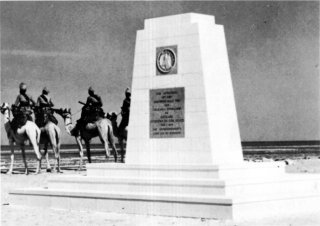
Springbok Memorial outside
El Alamein War Cemetery
This cemetery contains the graves of servicemen and women who fell at differing periods of the Italian Campaign. Among them are those who lost their lives fighting with the partisans and of airmen who died in bombing raids over Northern Italy. Of the 518 burials, 72 are those of South Africans, including 30 of the South African Air Force.
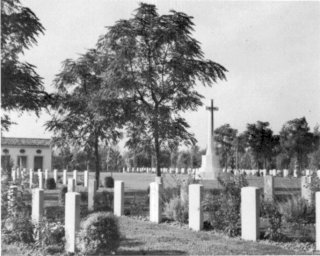
Padua War Cemetery,
Italy
This site was originally selected in January 1944, but the Battle of Cassino during the first five months of that year made it impossible to use until the Germans had withdrawn. During these months Cassino saw some of the fiercest fighting of the Italian Campaign, the fiercely defended town and the dominating Monastery Hill proving to be the most stubborn obstacles encountered in the advance towards Rome. The greater part of the 4 267 servicemen buried in this cemetery, of which 47 are South African, lost their lives in the battles during these months.
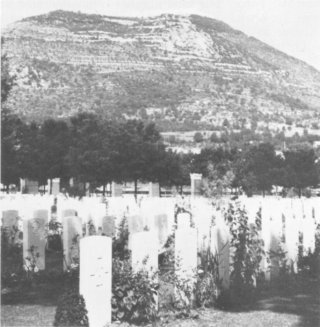
Cassino War Cemetery,
Italy
The Memorial, standing in the cemetery, commemorates the names of 4 053 Commonwealth servicemen, including 13 South African, who died in the Italian Campaign and who have no known grave.
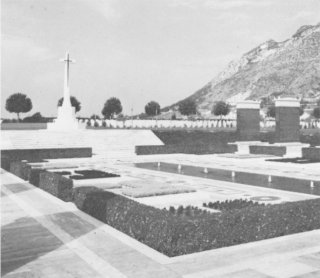
Cassino Memorial, Italy
Bari, a seaport on the Adriatic coast, was an important supply base and hospital centre in the early stages of the Allied invasion of Italy. The War Cemetery, which contains 2 128 graves, including 162 South African, is situated about 8 miles (12,9 km) south-east of the town. A large number of the graves are those of airmen, some of whom were brought from Foggia, the centre of a large group of airfields captured by the Eighth Army in September 1943, and from which attacks were made on targets in Europe.
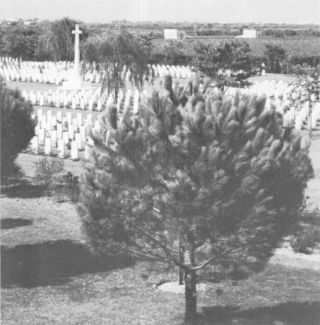
Bari War Cemetery,
Italy
One of the most difficult operations in the advance along the Adriatic coast was the crossing of the Sangro River. Of the large numbers who died in this operation and during fighting in the surrounding area, 2 619, including 74 South African, are buried in this cemetery which lies in the Commune of Torino di Sangro and forms a wide arc on the slope of a hill facing south-east. To the left, at a distance of half a mile (0,8 km) is the Adriatic Sea, while immediately behind the cemetery the ground falls sharply to the broad valley of the Sangro River. The design of the cemetery is semi-circular, resembling an amphitheatre and at the entrance is a circular forecourt, paved in a radial design of brick, Travertine stone, terrazzo and coloured sea pebbles.
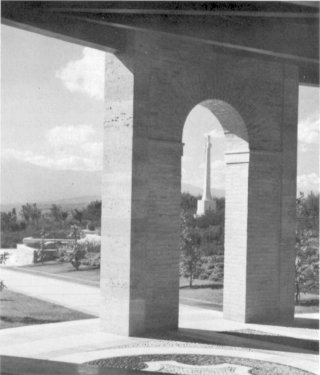
Sangro River War Cemetery,
Italy
It was near Bolsena, in the middle of June 1944, that the Germans made their first determined stand after withdrawing from Rome, and to the east of the Lake of Bolsena the 6th South African Armoured Division fought a heavy battle. Bolsena War Cemetery contains 600 graves and of these 185 are South African.
At the entrance to the cemetery stands a single pillar bearing on it a lion killing the hydra. Carved from specially selected hard Pietra Serena, the stone of which the Florentine palaces are built, it is the work of the sculptor James Woodford who later designed the Queen’s beasts for the coronation.
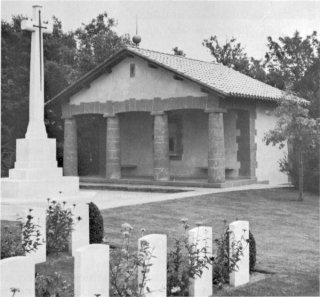
Bolsena War Cemetery,
Italy
The army chose this cemetery site in September 1944 and burials were brought in from a wide area around, extending from Pescara, 50 miles (80 km) south, to Pesaro, over 30 miles (48 km) north of Ancona. They include casualties from the first attacks on the eastern sector of the Gothic Line at the end of August and early September 1944. Ancona itself was taken by Polish troops on 18 July 1944 and served as the main port for supplies for the attack on the Gothic Line and the final break-through the following month at Argenta. Of the 1021 buried here, 79 are South African.
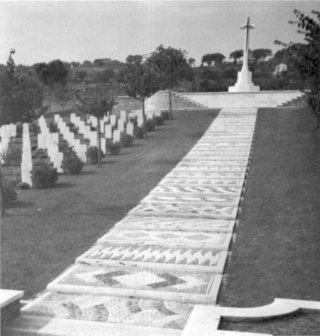
Ancona War Cemetery,
Italy
Lying in the bend of the River Arno on the main road from Florence to Arezzo, the cemetery contains 1 630 graves, including 213 South African. Florence was captured from the Germans in August 1944 and became the base for the assault on the Gothic Line in the Appenines. Some of the original trees, which formed part of the olive grove in which the cemetery stands, still remain.
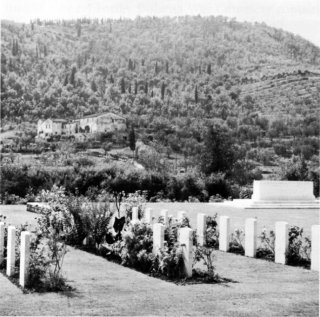
Florence War Cemetery,
Italy
The site of this cemetery was selected in September 1944, and burials were brought in from the surrounding battlefields. A high proportion of them date from June and July 1944, when the Germans in this region were making their first attempts to stop the Allied advance north of Rome. Included in the total of 949 burials are 55 South Africans.
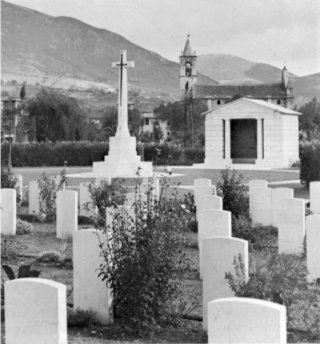
Assisi War Cemetery,
Italy
The site for this cemetery was chosen by South African Forces and the first burials made by the 6th South African Armoured Division in November 1944. Of the 401 South African burials many were made direct from the battlefields of the Appenines where, during the winter of 1944-1945, South African troops held positions some 5 or 6 miles (8 or 9,6 km) north of Castiglione. In this cemetery is a small stone memorial shelter erected by the South African Engineers and which was incorporated into the design of the cemetery by Louis de Soissons, the architect responsible for Second World War cemeteries in Italy.
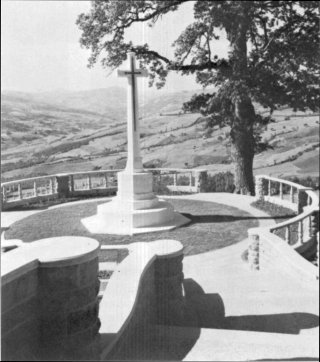
Castiglione South African Cemetery,
Italy
The town of Caserta is famous for its Royal Palace which served as headquarters for the Allied armies in Italy for the greater part of the Italian campaign. The site of Caserta War Cemetery was chosen in April 1945; some of the graves are those of prisoners of war and some of men who died in No. 2 British General Hospital which was at Caserta from December 1943 till September 1945. Fifty four of the 769 burials are South African.
Udine was entered by troops on 1 May 1945 and burials in the cemetery include casualties from the last few days of fighting in Italy, some earlier prisoner of war and air force casualties, and, later, garrison burials and burials from 70 British General Hospital which was at Udine for several months from May 1945. Of the 414 burials in the cemetery, 40 are South African of which 32 were members of the South African Air Force.
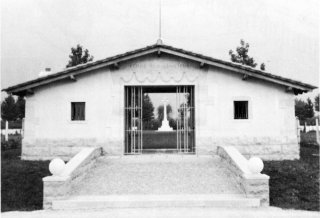
Udine War Cemetery, Italy
On this Memorial are engraved the names of 15 920 seamen, including 225 men of the South African Naval Forces lost at sea during the Second World War and who have no grave but the sea. They served in both British and South African ships.
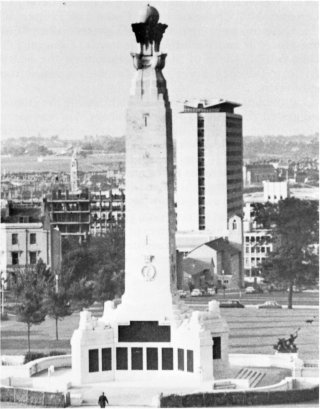
Plymouth Naval Memorial,
England
This memorial situated high on a hill, and overlooking the Thames and Magna Carta Island, from which on a clear day can be seen seven counties, was built to commemorate airmen who died in aerial operations based in the United Kingdom and whose graves are unknown; they came from all parts of the Commonwealth and from the countries of our Allies. Sixteen of the names commemorated were members of the South African Air Force but there are also the names of many more South Africans who lost their lives while serving with the Royal Air Force.
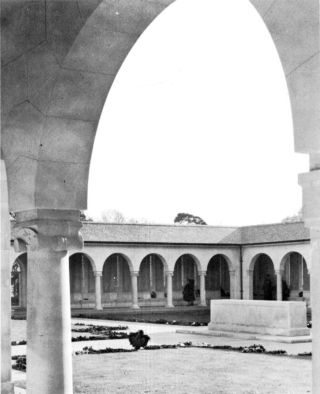
Air Forces Memorial,
Runnymede, England
Return to Journal Index OR Society’s Home page
South African Military History Society / scribe@samilitaryhistory.org